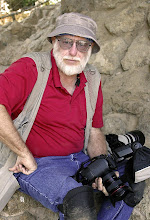Netherlands 1
Arnhem, Netherlands
Near Arnhem is a small community of Rozendaal. Some of Connie's ancestors come from there and one of her great uncles still lives there. It is both a farming area and a national park area. Rozendaal has a castle, the lord of which gave the estate to the government to be used as a preserve. A bit farther north is another former estate that was made into a national park, the largest in Holland.
So, here, not far from the German border, in the area where one of World War II's great battles was fought, in one of the most densely populated countries in the world, is all this wonderful park land with wild deer and mountains--although small mountains--and forests. And roadsall over the area, including the towns, can be forested lanes with tall trees interlocking overhead because all the powerlines are underground. The only overhead lines are those for electric buses, trams and trains.
We rented a car in Arnhem. It was a small fiat with an automatic and a gas engine. Must have had a small tank, as well, but it only took 10 liters of petrol in three days of driving. The initial directions I got from the Hertz agent were hard to follow and I was forced by traffic past the turn I thought was correct. That meant going to the next turning place and driving with the general idea of following the road as if I were going the right way. Since my sense of direction wasn't bothering me too much, it worked out. I got on a road going the right way, but just a little off. A bonus was that I drove across the John Frost Bridge, renamed after the commander of the British forces that took the Arnhem side of the bridge and held it for days against increasingly overwhelming odds. When I did have a chance to retrace the route back to Arnhem centre and out again, I found the correct way was exceptionally difficult and not marked in a way the stranger could follow.
We found the Rozenhoek restaurant and hotel, which was more like a bed and breakfast than a regular hotel. It was within walking distance of the small town, which we found to be delightful. No giant malls here, just all the shops you'd need to get by. It was also very close to the nursing home that Connie's uncle lived in. He has Parkinson's disease, but while it affects his hands and balance, he is sharp as a tack. We visited with him through an afternoon. We had brought copies of old photographs that were in Connie's parent's home, but were generally unmarked, some obviously almost a century old. The uncle was able to identify about half the pictures, the ones that came from Connie's Dutch Grandmother's family.
Then we took him to dinner at a restaurant that he suggested. It was several kilometers away, which I thought odd, but the food turned out to be very good and he had a surprise for us. Instead of returning the way we came, he directed me into the Rozendaal national forest and brought us back to within a couple of blocks of the nursing home. We saw wild deer and an occasional other person in a car or walking or jogging and we saw the mountains.
This seemed to affect Connie deeply. Like me she had no idea that Holland had any wild left, because what we always hear about is the land created from the sea and never much abut the portion that they started from.
Her uncle had been in the Dutch resistance in WWII and was a delight to visit.
On our second full day in the area we drove to the outdoor museum of the Netherlands, just to the east of Arnhem and north of Rozendaal. Along with families and school groups we wandered a large area with homes, shops and farmhouses from many eras in Dutch history. Most farmhouses from earliest times to recently, perhaps still in places, were house on one end and barn on the other. As times changed the use of the barn changed from keeping animals to sleeping quarters for the help to a place to store equipment. There were windmills and geese, cows and sheep and a old-fashioned trolley to ride around to the different points of interest.
Then we continued on the the national park to the Kroller-Muller (but don't hold me to the spelling) museum. The parklands and the museum were donated by a wealthy family to the nation. The contents of the museum were the result of a wealthy woman wanting to establish a great collection of modern art, beginning with everything of Van Gogh's she could find. She hired an expert to manage the collection and find new pieces for it. What a ride he took her on. There are some truly great pieces, especially among the Van Goghs, but for every great piece there must have been at least three dogs. One large canvas was merely a dirty white. Another painting was shiny green and nothing else. Some sculptures were simply blocks of wood. Some were sort of stacked like Lincoln logs, others were randomly placed about a floor.. With rare exception most of the new acquisitions were horrible. One photography exhibit was apparently polaroids of the photographer and his friend, both looking like strung-out drug addicts and neither captured doing anything of interest. Before we got through the museum we were both laughing at pictures while serious-looking art students were studying these atrocious works as if they were something special.
Next we are off to Amsterdam.


0 Comments:
Post a Comment
<< Home